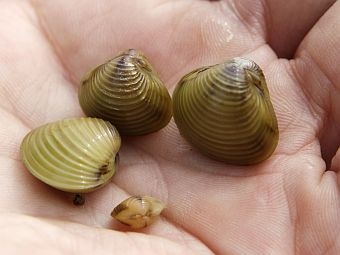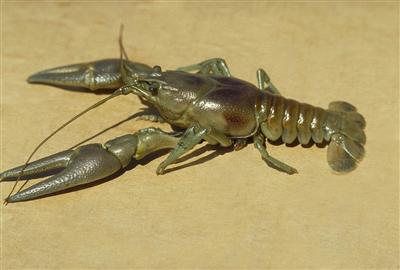Asian Carp
What are they: Asian Carp is actually a term to identify many species of carp from Asia. These species include silver, bighead, grass, and black carp. Asian carp are filter feeders, and they can eat up to 20% of their body weight everyday. Asian Carp eat much of the plankton in a waterway. These small organisms are important food sources for other filter feeders native to out streams.
Silver carp have been known to jump out of the water as boats approach. These carp have injured boaters when they are struck by the fish jumping out of the water. This behavior has allowed them to be caught in large number with nets on boats to catch the fish as they jump. Other fishing methods are less effective because the fish are filter feeders.
Asian Carp have few predators in the US, and adult females can produce more than one million eggs each year. With few predators, and the ability to reproduce quickly make Asian Carp hard to remove from a body of water once they are established.
Silver carp have been known to jump out of the water as boats approach. These carp have injured boaters when they are struck by the fish jumping out of the water. This behavior has allowed them to be caught in large number with nets on boats to catch the fish as they jump. Other fishing methods are less effective because the fish are filter feeders.
Asian Carp have few predators in the US, and adult females can produce more than one million eggs each year. With few predators, and the ability to reproduce quickly make Asian Carp hard to remove from a body of water once they are established.
Where are they native: All species labeled as Asian Carp are native to South Eastern Asia. In their native range, they inhabit rivers and lakes. They prefer colder waterways, and excel in deep lakes with coldwater reservoirs.
How are they spread: Asian Carp arrived in the US by various methods. All were intentionally brought to the US for use in various ponds and water treatment. After their initial introduction they have been further spread in various ways. These include bilge water, and as released bait fish.
Where are they currently: Asian Carp have been documented in much of the Mississippi river basin. Asian Carp have not been found in PA yet, however it is expected they will be found in the Allegheny drainage with in a few years. It is currently illegal to possess any life or dead Asian Carp in PA. Asian Carp also pose a threat to the Great Lakes where they could impact the ecology and economics of the area.
How are they spread: Asian Carp arrived in the US by various methods. All were intentionally brought to the US for use in various ponds and water treatment. After their initial introduction they have been further spread in various ways. These include bilge water, and as released bait fish.
Where are they currently: Asian Carp have been documented in much of the Mississippi river basin. Asian Carp have not been found in PA yet, however it is expected they will be found in the Allegheny drainage with in a few years. It is currently illegal to possess any life or dead Asian Carp in PA. Asian Carp also pose a threat to the Great Lakes where they could impact the ecology and economics of the area.
How to prevent them: It is important that people never transport live bait to new waterways. Fisherman should either catch bait in the stream it will be used in, or purchased from a reputable bait store. This will ensure that bait that comes off of the hook, or is accidentally released will not impact the waterway.
Any clothing or other gear that comes in contact with water should be thoroughly cleaned, and dried. This includes boats and trailers. If you use a boat in a waterway and and all water in the boat, including live wells and bilges, should be emptied before you leave a waterway. This areas should then be allowed to dry as much as possible, or cleaned with soap or bleach.
Any clothing or other gear that comes in contact with water should be thoroughly cleaned, and dried. This includes boats and trailers. If you use a boat in a waterway and and all water in the boat, including live wells and bilges, should be emptied before you leave a waterway. This areas should then be allowed to dry as much as possible, or cleaned with soap or bleach.







